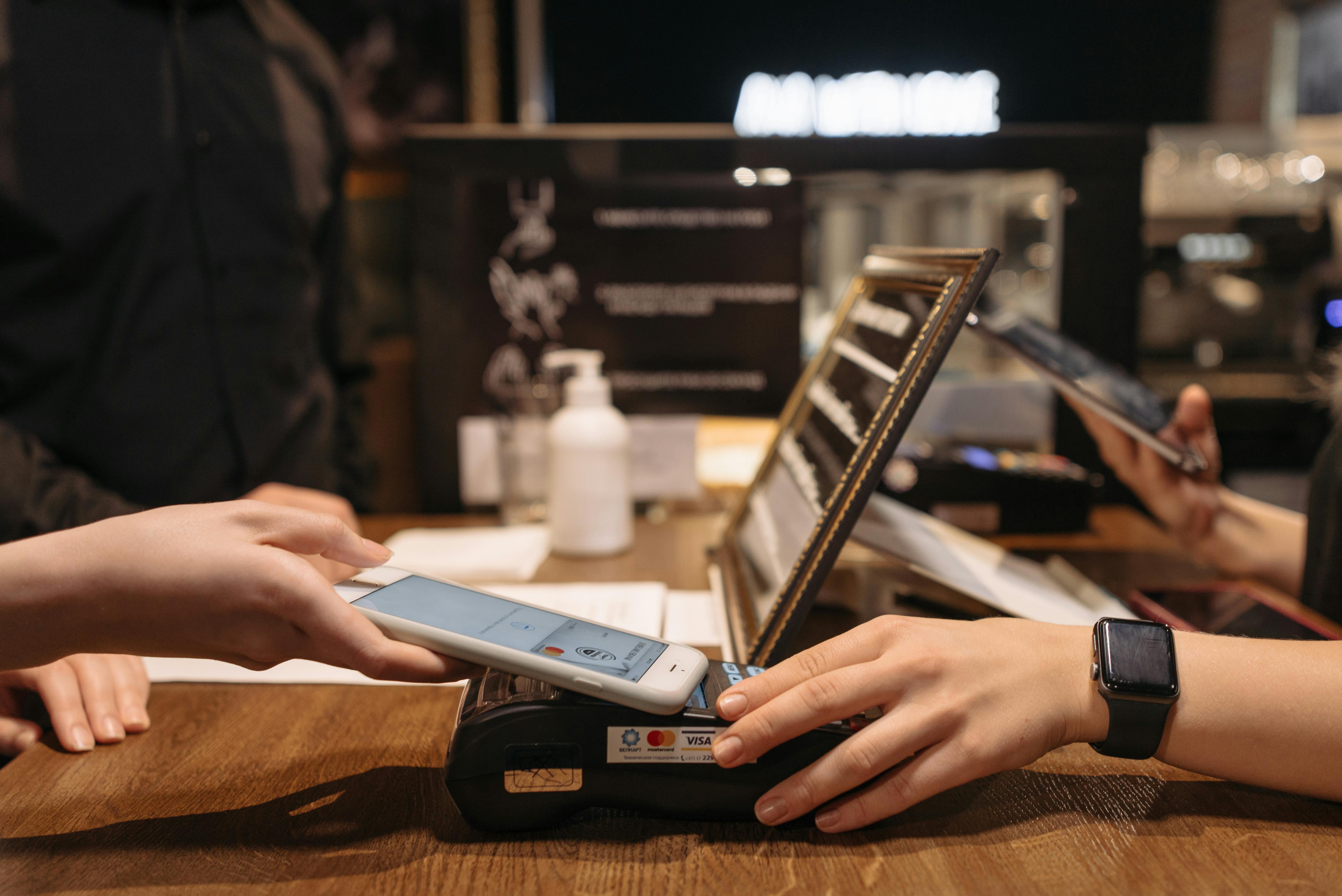Best Digital Payment Solutions for Small Businesses in Saint Vincent
Let me start with an honest admission: Over the years consulting for Caribbean SMEs (especially those in Saint Vincent and the Grenadines), I’ve seen much confusion—sometimes even real anxiety—around digitizing payments. That’s not surprising. If you run a small shop in Kingstown, offer guesthouse rentals in Arnos Vale, or run a fishing business on Bequia, suffice it to say: The way you accept and process payments today can literally determine your business’s survival—and your sanity—in tomorrow’s competitive marketplace.1 And while the buzzwords—“contactless,” “e-wallet,” “crypto”—sound dazzling, most business owners I’ve worked with just want two things: solutions that actually work in Saint Vincent and the Grenadines, and absolute reliability when the ECCB issues guidance or when the banks (inevitably) tweak their rules.
Here’s what strikes me after years in the trenches: Most “best payment systems” rankings are written from a U.S./UK-centric view. That’s fine (for them), but try setting up Stripe on a Vincentian bank account. Or ask PayPal to verify your local address—good luck! My ambition in this guide is simple: help fellow business owners (of all digital experience levels) cut through global hype and actually get paid—less stress, more profit, total regulatory peace of mind.
Understanding the SVG Payments Landscape (2025 Snapshot)
If you haven’t tried to open a new merchant account or set up card processing in SVG in the past six months, buckle up. The regulatory framework keeps shifting. Post-pandemic trends saw a dramatic increase in digital payment adoption across the Caribbean, with Saint Vincent businesses seeing a spike in demand for POS terminals, online invoicing, and no-contact payments—especially after 2022.2
The most successful SVG small businesses layer multiple payment options—digital bank transfers for regulars, card machines for in-person purchases, and at least one global-friendly e-wallet for overseas clients. Relying on cash or a single outdated POS almost inevitably narrows your opportunity.3
The SVG market is small by international standards, but don’t let that fool you; it’s also complex. Several legacy banks (Republic Bank, Bank of St. Vincent) moved cautiously toward digital, while regional fintechs (WiPay, CaribPay) made inroads—some quickly, others less reliably.4 On top of this, ECCB’s DCash digital currency initiative set a global precedent with its cross-island pilot—yet business adoption has been all over the map.5
Saint Vincent and the Grenadines was one of eight Caribbean countries to launch a real-world central bank digital currency project (DCash) in 2021—a world first at the time for a currency union.6
What Makes a “Great” SVG Payment Solution? (How I Actually Rank Them)
Here’s my reality-check criteria: When advising a Vincentian business (which I’ve done more than a dozen times in the last two years), I never start with “global brand recognition.” Instead, I ask:
- Will local banks actually allow linking and withdrawals? (Some block even PayPal transfers!)
- How simple is it to sign up and verify if you’re a sole trader vs. an LLC vs. a partnership?
- Does the provider offer real support (not just email auto-replies)?
- Can customers—both locally and overseas—pay you using tools they trust?
- Is pricing transparent, or do you get stung by hidden FX charges and processing fees?
- Does it meet current ECCB and SVG FSA anti-money laundering standards?
Most “best-of lists” gloss over the huge headaches these issues cause. But in my experience, getting stuck with funds you can’t withdraw, or having a bank freeze your merchant account “pending clarification,” is a real risk for SVG businesses.7
The Realities of Local Digital Banking & Card Payments
Let’s get one big myth out of the way. Local bank-issued debit/credit cards and POS solutions are not equal to their U.S./EU counterparts. International card acceptance is patchy, and online transactions come with extra layers of verification. But if you want to stay 100% compliant in SVG, you must understand how regional banks handle settlement, merchant services, and international transfers. Otherwise, expect blockages and delays—a lesson I learned early (the hard way) consulting a Kingstown furniture importer in 2021.
Caribbean-Friendly Digital Payment Gateways: What Actually Works
Here’s where nuance is vital. While mega-platforms like Stripe and Square dominate global headlines, SVG businesses usually have better luck with regional gateways or solutions adapted for the Eastern Caribbean banking system.8 This is often because the back-end settlement rails, KYC requirements, and currency conversions are simply structured differently from the U.S.
Avoid the trap of assuming a payment gateway “supports the Caribbean” just because it lists Trinidad, Barbados, or Jamaica. Always, always check for SVG coverage—and even then, confirm with your actual local bank.9 (Lesson learned by a client in Bequia who lost weeks reconfiguring after initial approval was quietly revoked.)
Table: SVG-Friendly Payment Gateways at a Glance (2025)
| Provider | Best For | Key Features | SVG Compatibility |
|---|---|---|---|
| WiPay Caribbean | Retailers, service pros, e-commerce | Card payments, send/request payments, e-commerce plugins | YES (local onboarding, bank transfer support) |
| CaribPay | Regional merchants, freelancers | Mobile payments, online checkout, cross-border options | YES (check with your SVG bank; some require manual approval) |
| DCash (ECCB) | All local transactions, public sector, retail | Instant digital transfer, no merchant card fees | YES (but adoption still spotty among smaller shops) |
| PayPal (limited use) | Export services, remote freelancing | Receive $USD from abroad; withdrawals complex | PARTIAL (can’t receive most card payments; withdrawal hacks required) |
Now, you might be thinking: “Do these actually work in the wild?” Based on the feedback of a half-dozen SVG SMEs I’ve mentored recently, WiPay stands out, especially for brick-and-mortar stores beginning their digital transition.10 It’s Caribbean-owned, and their onboarding process is relatively smooth if you have your business registered and an EC dollar-denominated account.
Real-World Pain Points: What Trips Up SVG Businesses?
- Some major global providers (like Stripe) simply do not support SVG-issued cards or bank accounts. Even with creative workarounds, any solution that isn’t bank-approved exposes you to frozen funds and regulatory trouble.11
- Inability to easily move $USD earnings into EC dollars; hidden fees can eat up to 10% of international transfers, especially through PayPal withdrawal via third-party cards.
- Fraud or “chargeback” risk is real; a single disputed transaction on a global processor can lock out a small SVG business for months.
- Unstable regional gateway support: I’ve seen CaribPay offer excellent integration for six months, then quietly drop SVG support with little warning (2023).
Mobile & E-wallet Options: The Digital Leap for SVG Entrepreneurs
Let’s get to what excites me: How quickly SVG’s micro and small businesses are catching up with the Caribbean e-wallet boom. I remember an ice cream vendor in Layou, who started accepting QR payment via WiPay app—her business grew by 20% in three months, and her cash handling headaches (and daily reconciliation struggles) basically vanished.
As of 2024, nearly 91% of adults in SVG own a mobile device, and of those, about 65% have installed at least one banking or wallet app.12 Younger business owners, in particular, are leapfrogging traditional banking by offering mobile-first payment options before even opening a brick storefront.
E-wallet Leaders in SVG
- WiPay App: Established, local integration, supports both EC and $USD. Account-to-account transfer is instant for most Vincentian banks.
- Mobile banking apps (RepublicMobile, Bank of SVG Mobile): Immediate transfers to anyone with a linked EC account; rapidly adopted by taxi drivers, shops, and professionals alike.
- DCash Merchant App: Additional government incentives if you accept ECCB’s digital currency, though some per-transaction limits apply and older customers report onboarding struggles.
- PayPal/Venmo: For cross-border “gig” payments (with caveats and extra steps for local account linkage).
I have to be honest—customer trust is the real sticking point here. Older generations in SVG (and across the Caribbean) have traditionally been suspicious of digital systems after past regional banking crises. If you can demonstrate transparency and offer the option to “see the payment land” instantly (e.g., via mobile or DCash), you’ll win lasting loyalty.
The bottom line? Mobile-first, flexible payment tools are not just “nice-to-haves.” In today’s SVG retail and service landscape, they’re survival tools.13

Crypto Payments: Hype or Realistic Option for SVG SMEs?
Admittedly, this is where my learned caution comes in. Crypto has made headlines, and I’ve fielded a lot of calls from SVG entrepreneurs who heard (often from overseas relatives) that “Bitcoin is the answer.” My stance? Crypto is innovative, but still more “experimental” than “mainstream”—especially for local retail and in-person service industries.14
- SVG’s FSA does not regulate or guarantee cryptocurrency transactions for businesses; be extremely cautious with new customers or large transactions.
- Local cash-out options are limited but some online consultancies, web designers, and export services are using USDT or Bitcoin via platforms like BitPay or Binance Pay for invoice settlement.15
- Price volatility adds extra risk: accepting $1,000 in BTC today could mean $900 by next week or $1,200—no easy predictability for managing inventory or payroll.
My frank advice for most SVG small business owners? Focus on local-friendly, regulated solutions first. Integrate crypto only as an experiment with “non-essential” sales or offshore work, and document every transaction for the inevitable compliance check.
I assisted a local SVG software startup in 2023 experimenting with crypto for offshore payments. Results? Speedy transfers but a major accounting headache—no bank conversion, poor transparency, and endless manual reconciliation come tax time. Proceed with caution unless tech-savvy.
Setup, Troubleshooting & FAQs: Avoid Costly SVG Payment Mistakes
Here’s where I need to clarify a few things—mainly because I’ve made (and fixed) these mistakes myself over the years. In SVG, the setup process for digital payments can be surprisingly bureaucratic: documentation requirements, multi-step verifications, KYC delays, and bank letter requests. Yet clients always ask: “What’s the fastest way to be up and running?”
- Start by confirming your national registration—sole trader, company, or partnership. Banks and payment platforms need this from the outset.
- Acquire a local EC dollar bank account and ensure it’s enabled for online/merchant transactions (not all accounts support this—double-check with your branch).
- Choose a primary payment provider with local SVG onboarding. WiPay generally streams through quickest; DCash often requires follow up at the Bank of SVG or ECCB office.
- Test the full process: Send yourself a small $EC and $USD payment before “going live.” Watch for delays, rejection emails, or extra FX fees.
- Train your team: If you run staff (even just family), ensure they know how to handle mobile payment IDs, confirmations, and refunds. Mistakes here can cause real customer friction.
And, oh, this feels super important: Record every digital transaction outside your payment app for tax and compliance. SVG tax authorities are now auditing e-wallet and mobile banking flows. So, keep duplicate records—even if the platforms promise digital receipts.16
For reference, here’s a common question I keep getting (especially lately):
“Can I use a U.S. or UK payment gateway (like Stripe or Square) if my business is registered in SVG?”
My answer has to be: For now, no. Unless your business banking is located in those countries, onboarding is either impossible, forbidden by terms, or likely to end with restricted funds.17 You’re better off prioritizing regional, SVG-vetted providers.
Troubleshooting Checklist: Most Common SVG Digital Payment Hurdles
- Mismatched names between your bank account, business registration, and provider onboarding form
- Attempting to use unsupported card types or banks not on the payment provider’s SVG list
- Insufficient KYC documentation (recent bills, incorrect IDs, out-of-date business licenses)
- Unanticipated fees—especially cross-currency charges on EC dollar accounts when servicing U.S./European clients
Take it from someone who’s burned a few hours (or, honestly, entire days) pulling together missing paperwork at the last minute: triple-check your setup and don’t be shy about calling the local support line. That human touch is still king in SVG fintech (for now).
A 2024 survey found that more than 57% of small businesses in Saint Vincent and the Grenadines lost money or customers due to payment processing delays or incomplete “digital setups.”18
Key Takeaways & SVG Digital Payment Roadmap (2025)
Let’s step back. If you’re still reading, you’re probably asking yourself: “What should I actually do next?” Here’s my best, grounded advice—built from years helping Vincentian retailers, service pros, and even those “side hustle” entrepreneurs get paid reliably:
- Layer at least two payment systems: One local bank-affiliated option (WiPay, DCash), and one cross-border tool (PayPal or CaribPay, with caveats).
- Start with mobile-first adoption: Encourage your team/customers to try QR or mobile payment—even as a “trial run.” Show them the transparency.
- Document all digital payments: Keep receipts—paper or digital—for every transaction, and organize weekly. The SVG taxman will thank you later.
- Communicate payment options clearly: Update your signage, terms, invoices, and website. More choice = more trust.
- Review every 6 months: Digital payments are evolving faster in SVG now than in the last decade—reevaluate your systems and check for new providers regularly.19
Don’t overcomplicate your set-up. Small, steady progress beats “waiting for the perfect solution.” Think of it more like upgrading your business toolkit than making a once-in-a-lifetime shift.
Looking Ahead: The Future of Digital Payments in SVG
Here’s the thing: SVG is not static. With ECCB and regional fintech investments growing, the next two years (2025–27) will see more digital options—including maybe Apple Pay or Google Pay acceptance—arrive for even the smallest bookstores or street vendors. But the fundamentals—transparency, regulatory compliance, customer trust—remain the same.20
My personal hope? That we’ll see more local business networks share their payment workflows, success stories, and mistakes (yes, especially the mistakes). In my experience, peer learning beats any sales pitch—just like when I watched a local farm stand pivot to QR payments after seeing the grocer next door do it. If you want to future-proof your SVG business, start now, stay flexible, and lean into local resources.
Where are you on your SVG digital payment journey? Have you struggled, failed, adapted? Leave a comment or question below—or better yet, share your story with a neighboring business. Let’s grow our digital resilience together.



